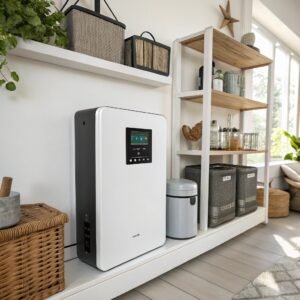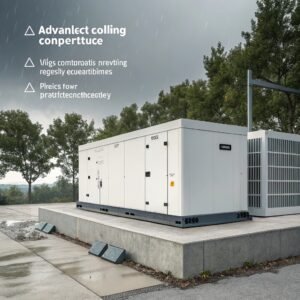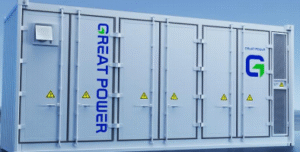What Are the New Technologies for Outdoor Energy Storage Systems?
by
What Are the New Technologies for Outdoor Energy Storage Systems?
Ever wondered how cutting-edge batteries can withstand extreme weather while powering homes reliably?
New outdoor energy storage technologies feature liquid cooling for thermal stability, solid-state batteries for safety, and AI-driven energy management, enabling durable performance in harsh conditions while optimizing energy usage.
The outdoor energy storage landscape is transforming with breakthrough technologies that solve critical challenges. Let's explore how these innovations work.
Can Outdoor Storage Batteries Interact With the Grid? Can They Sell Electricity Back?
Imagine your battery becoming an active grid participant, not just silent storage.
Smart outdoor storage systems utilize IEEE 1547-compliant inverters for two-way grid interaction, enabling peak-time energy arbitrage and participation in utility demand response programs with proper interconnection agreements.
Bidirectional Energy Flow Technology
Modern systems feature:
- UL-certified hybrid inverters (e.g., SolarEdge, Enphase)
- Automatic frequency/wattage regulation
- Anti-islanding protection (per NEC 690)
Grid Services Monetization
| Service Type | Potential Earnings | Requirements |
|---|---|---|
| Peak shaving | $100-300/kW-year | 10kW+ system |
| Frequency regulation | $50/MWh | Fast-response batteries |
| Capacity markets | Varies by region | Utility certification |
"Virtual power plant programs in California now compensate homeowners $2/kWh for shared storage capacity during grid emergencies." - CAISO 2023 Report
Can an Outdoor Energy Storage System Replace a Generator? How Long Will They Last During a Power Outage?
During hurricane season last year, our neighbor's generator failed while our battery kept running.
Modern 20-30kWh lithium systems typically provide 24-72 hours of essential backup power, outperforming generators with instant start-up, zero maintenance, and silent operation - though extreme cold below -20°F requires thermal management.
Runtime Comparison
| Load Scenario | 20kWh Battery | 10kW Generator |
|---|---|---|
| Essentials (3kW) | 60+ hours | 24-36 hours (20gal tank) |
| Full home (10kW) | 14 hours | 8-10 hours |
Key advantages:
- No fuel requirements
- Automatic transfer switching
- Parallel expandability
Pro Tip: Systems like Generac PWRcell integrate hybrid inverter/battery options for seamless generator pairing when extended outages exceed battery capacity.
How Long Do Batteries Last? How Many Years Will It Last? How Can I Tell When It's Time to Replace It?
That moment when your phone battery won't hold charge - energy storage faces similar aging.
Quality lithium batteries maintain 80% capacity after:
- Cycle aging: 3,000-6,000 cycles (9-15 years daily use)
- Calendar aging: 10-15 years
- Throughput: 30-50MWh per kWh installed
Replacement Indicators
| Parameter | Healthy Range | Replacement Threshold |
|---|---|---|
| Capacity | 100-80% | Below 60% original |
| Internal resistance | <150% new | >200% new |
| Self-discharge | <3%/month | >5%/month |
Diagnostic tools:
- Manufacturer monitoring apps (Tesla, Sonnen)
- Professional capacity testing
- Warranty tracking (most cover 10yr/70% capacity)
Conclusion
Next-gen outdoor storage combines liquid-cooled lithium or solid-state batteries with intelligent grid software, delivering reliable backup power while enabling new revenue streams through utility participation. Staying informed helps maximize these investments.
Upgrading to modern storage tech ensures resilience and energy independence for years to come.



